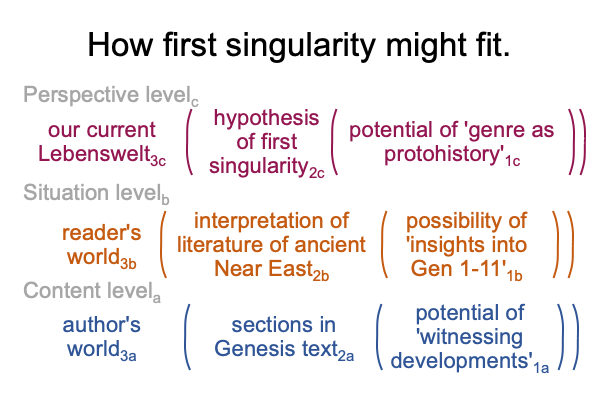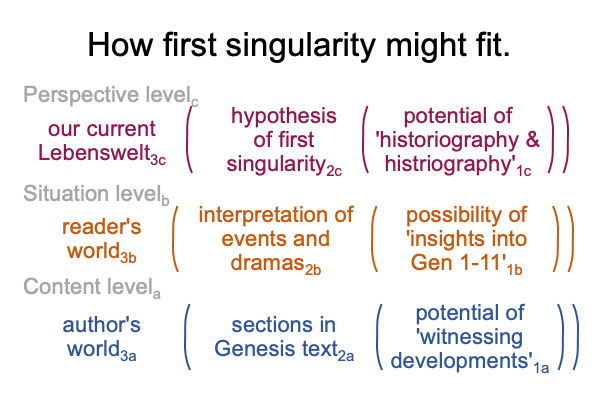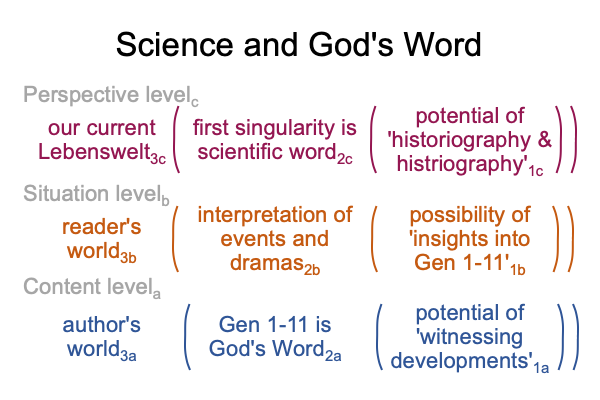Looking at the Book (2015) Genesis: History, Fiction or Neither? (Part 25 of 38)
0088 Why do all the written origin stories of the ancient Near East depict a recent creation of humans (with the exception of the Creation Story)?
The hypothesis of the first singularity offers an explanation. The hypothesis works as a perspective2c, that virtually brings a situation-dependent interpretation2b into relation with the contents of the Biblical text2a.
Figure 09
0089 Of course, the hypothesis is not the only perspective-level actuality2c.
Another option is God’s Word2c.
0090 With the passing of the Age of Ideas, the normal context of our current Lebenswelt3c does not rule out either actuality2c.
Does the potential of ‘genre as classification’1c, seem to favor the natural approach of the hypothesis2c over the supernatural approach of God’s Word2c?
I wonder.
Well, the name of the book that I am looking at could be titled, “Genesis: Does Genre1c Contribute to Insights1b into the Biblical Witness1a?”.
Plus, the arguments from the contributors seem to give a qualified “yes”.
0091 In other words, the concept of genre1c gives the reader insight1b into how the witness is viewing ‘something real’1a.
0092 The concept of the first singularity1c offers a hypothesis on the nature of ‘something real’1a.
At the same time, the hypothesis does not describe the event from within.
Instead, the Genesis witness1a describes the emergence and fall of Sumerian civilization, the original fruit of the first singularity2c, from God’s point of view3c.
So, the answer to the question (in 0090) remains unclear.



